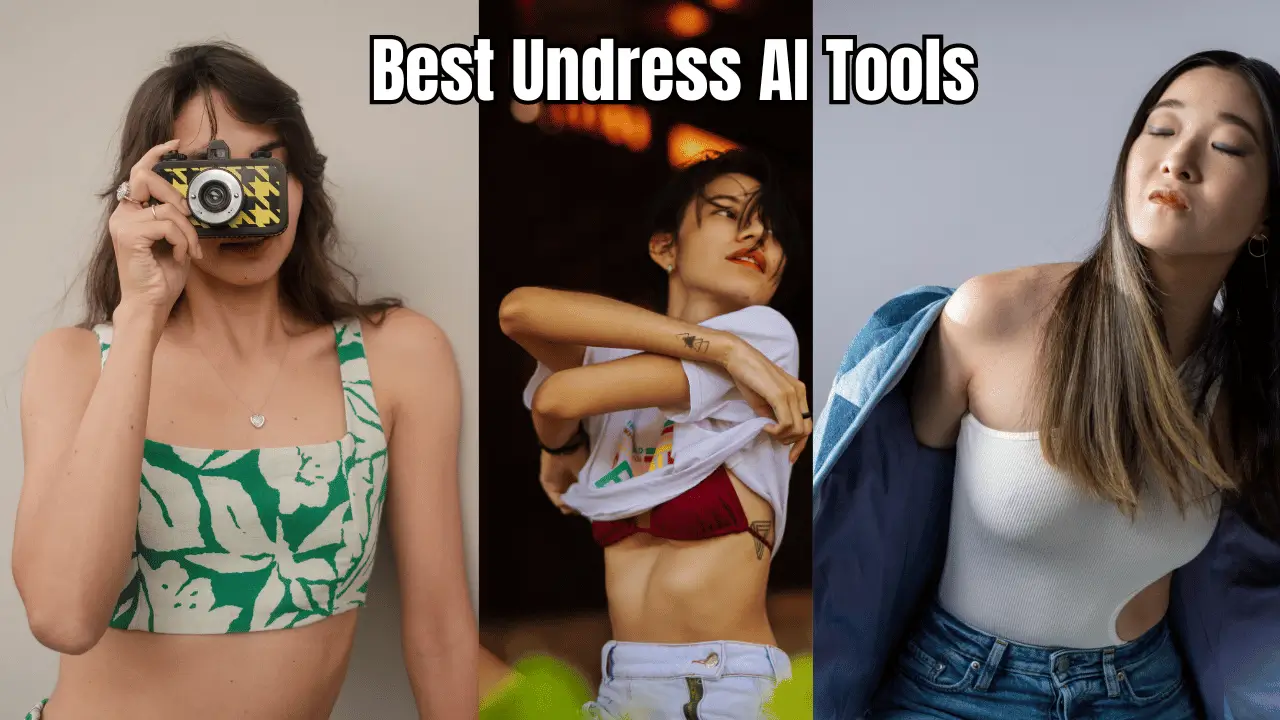Free AI Clothes Remover: Is It Safe & Ethical? + Top Tools
Ever wondered if technology could peel back the layers of digital imagery? The emergence of AI clothes remover tools is rapidly changing the landscape of digital artistry and design, presenting both unprecedented opportunities and complex ethical dilemmas. These tools, powered by sophisticated algorithms, offer the ability to digitally remove clothing from images, opening up a realm of possibilities that stretches from fashion prototyping to artistic expression.
The proliferation of these AI applications has sparked intense debate, particularly concerning privacy and consent. While some developers tout the creative potential and practical applications of the technology, critics raise serious concerns about the potential for misuse and the violation of personal boundaries. The question isn't just about what technology can do, but what it should do, and how to ensure it's used responsibly.
| Topic | Description |
|---|---|
| AI Clothes Remover Technology | Software utilizing artificial intelligence to digitally remove clothing from images. |
| Primary Uses | Fashion design visualization, artistic projects, and digital modifications. |
| Free Access | Many platforms offer free trials or basic versions with limited features. |
| Ethical Concerns | Potential misuse for non-consensual image manipulation and privacy violations. |
| Privacy Guarantees | Some developers emphasize secure image processing and data confidentiality. |
| Alternative Tools | Various apps and websites offer similar functionalities with different approaches. |
| Advanced Features | Some tools include natural body figure creation and seamless outfit swapping. |
| Cost Structure | Ranges from completely free to subscription-based models with premium features. |
| Image Security | Focus on ensuring uploaded and processed images are secure and confidential. |
Reference: Example Website
- Filmyfly 4 Wap Your Ultimate Movie Streaming Hub
- Bingewatching Galore Unveiling Filmyfly Bollywood Movies Download
Many AI clothes remover platforms boast a "100% free" service, attracting users with the promise of no subscription fees or hidden costs. These platforms often provide core features without requiring upfront payment, allowing new users to explore the technology's capabilities risk-free. For instance, some providers offer a limited number of free trials per day, enabling individuals to experiment with AI clothing removal before committing to a paid plan. This approach democratizes access to the technology, making it available to a wider audience.
The underlying technology behind these AI tools is often described as "advanced," aiming to deliver accurate clothing removal and realistic body figure generation. Developers emphasize the ability to create natural-looking results, addressing concerns about artificial or distorted outputs. Some platforms even suggest that their AI can help users achieve a "more perfect body" in a respectful manner, implying a degree of enhancement beyond simple clothing removal.
However, the question "Why use an AI clothes remover?" prompts a deeper examination of its potential applications. Proponents argue that these tools can be valuable assets for various creative and professional endeavors. Fashion designers, for example, can leverage AI to visualize how garments fit and drape on different body types, eliminating the need for physical prototypes and streamlining the design process. Artists and digital creators can enhance or modify images for artistic projects, ensuring a seamless and realistic finish. These applications highlight the potential of AI clothing removal to drive innovation and efficiency in multiple fields.
- Filmyfly Xyz Pro The Ultimate Guide To Movie Streaming
- Decoding Mkvmoviespoint Features Legality Alternatives And Latest Info
Despite the legitimate uses, concerns persist about the ethical implications of AI clothes remover technology. Claims made by services like "Undress VIP," which allegedly offer free AI-powered undressing of people in photos, raise serious red flags. The potential for misuse, including non-consensual image manipulation and the invasion of privacy, cannot be ignored. Critics argue that such tools could be exploited to create deepfakes, spread misinformation, or engage in malicious activities, highlighting the urgent need for robust ethical guidelines and regulatory oversight.
Several AI tools have emerged in the market, each with its own unique approach and capabilities. Slazzer 3.0, for instance, is promoted as a free online tool for removing clothes from images. Unclothy, another AI-powered tool, is designed to undress photos by leveraging advanced AI models. Users can upload images, and the tool automatically detects and removes clothing, generating what are often referred to as "deepnude" images. While these tools may offer varying degrees of accuracy and realism, they all share the fundamental ability to alter images in a potentially sensitive manner.
Recognizing the inherent risks, some developers emphasize the importance of data security and user privacy. They assert that uploaded and processed images are handled with utmost care, guaranteeing that user information remains secure and confidential. These platforms often implement encryption protocols and strict data access policies to protect user privacy and prevent unauthorized use of images. The emphasis on privacy aims to foster trust and encourage responsible use of the technology.
The creative possibilities enabled by AI clothes remover technology are vast. Beyond simply removing clothing, these tools can transform portraits by seamlessly swapping outfits to suit various fashion designs or creative projects. This capability is particularly useful for designers who want to experiment with different styles and visualize their ideas without the expense and effort of traditional photo shoots. The ability to quickly and easily alter clothing in digital images opens up new avenues for creativity and innovation.
Understanding how these AI tools function is crucial for both users and observers. Pincel AI, for example, offers multiple options for image manipulation, each with its own distinct features and capabilities. Similarly, Mimicpc AI provides a specific workflow for clothes removal, guiding users through the process step-by-step. By understanding the underlying mechanisms and options available, users can make informed decisions about how to use these tools responsibly and effectively.
In the digital age, AI-driven image editing has become a popular form of artistic expression. AI clothes remover websites empower users to go beyond traditional editing tools and explore their creativity by removing clothes from images, often with the goal of creating unique and visually striking effects. However, this form of artistic expression also raises questions about the boundaries of acceptable content and the potential for exploiting or objectifying individuals. The challenge lies in finding a balance between creative freedom and ethical responsibility.
The pursuit of physical perfection is a recurring theme in discussions surrounding AI clothes remover technology. Some platforms explicitly acknowledge the desire for a "more perfect body" when images are digitally undressed, suggesting that AI can be used to enhance or alter body figures. This aspect of the technology raises concerns about body image and the potential for promoting unrealistic or unattainable standards of beauty. It's essential to approach these tools with a critical eye and be mindful of the potential impact on self-esteem and body perception.
Fashion designers can revolutionize their design process with AI clothes remover tools, enabling them to effortlessly prototype and visualize new clothing concepts on models without the need for physical garments. This capability can significantly reduce the time and cost associated with traditional prototyping, allowing designers to experiment with a wider range of ideas and bring their visions to life more quickly. The use of AI in fashion design has the potential to accelerate innovation and transform the industry.
The market offers a variety of AI tools for removing clothes from images, each with its own strengths and weaknesses. From dedicated apps to online platforms, users have a wide range of options to choose from. However, it's important to exercise caution and carefully evaluate the features, privacy policies, and ethical guidelines of each tool before using it. Not all AI clothes remover tools are created equal, and some may pose greater risks to privacy and security than others.
Many AI clothes remover tools are designed to be user-friendly, making it easy for individuals with limited technical skills to create "deepnude" images. These tools often feature intuitive interfaces and simple instructions, allowing users to quickly upload images, remove clothing, and generate modified versions. However, the ease of use also raises concerns about the potential for misuse, as it lowers the barrier to entry for individuals who may not be aware of the ethical implications or legal consequences of their actions.
The process of removing clothes from photos online typically involves a few simple steps. Users often start by tapping an "upload" button to load their photo onto the AI clothes remover tool. Once the image is uploaded, they can tap a "generate" button to initiate the clothing removal process. The AI then analyzes the image and attempts to erase the clothes, often replacing them with a digitally generated body or a different outfit style. While the process may seem straightforward, the underlying technology is complex and constantly evolving.
Nudifier AI, for example, utilizes advanced artificial intelligence to digitally undress photos uploaded by users. Similarly, Undress Love offers seamless face switching in photos or videos, resulting in realistic yet believable transitions. These tools showcase the sophistication of modern AI and its ability to manipulate images in increasingly subtle and convincing ways. However, they also underscore the need for vigilance and critical thinking when encountering altered or manipulated media.
While some AI clothes remover tools are offered for free, others operate on a subscription basis or offer tiered pricing plans. For example, some platforms may charge $11.99 per month for access to premium features, while others offer a free version with limited capabilities. It's important to carefully compare the features and pricing of different tools before making a decision, and to consider the long-term costs and benefits of each option. The choice between free and paid tools often depends on individual needs and priorities.
The use of AI extends beyond image manipulation and into other areas, such as creating lifelike AI chats with multiple characters. These AI-powered conversations can be used for entertainment, education, or even companionship. While not directly related to clothing removal, the development of AI chatbots demonstrates the broad range of applications for artificial intelligence and its potential to transform various aspects of our lives. As AI continues to evolve, it's likely to play an increasingly important role in shaping our digital experiences.
- Explore Camilla Araujos Content Videos Photos On Erome
- Movies 4u Hollywood Hindi Dubbed The Ultimate Guide For Movie Buffs

Undress AI Free Tool How to Remove Clothing from Any Image
11 Best Undress AI Apps Free and Paid

6 Best and Free Undress AI Tools to Remove Clothes. WishfulThemes